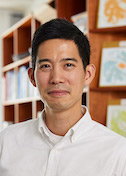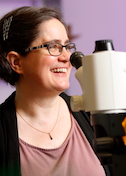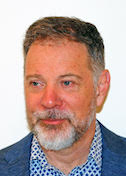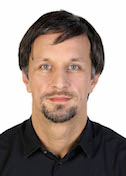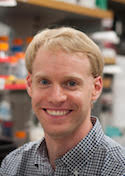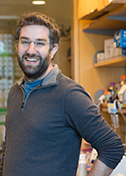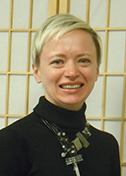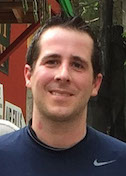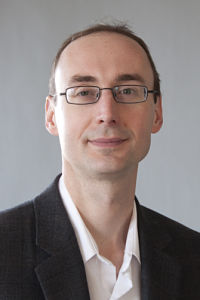Structural Storyteller
Karin Reinisch
Yale University
Published November 15, 2013
Karin Reinisch had being doing structural biology since graduate school, and as a post-doc solved the reovirus core in the lab of Stephen Harrison. But it wasn't until she arrived at Yale in 2001 to set up her own lab that she found her niche. "At least half of the department, six or seven people at the time, were working in one particular area, how you move materials between different organelles," she says. "That made it a very rich environment for a structural biologist."
Even today, Reinisch, now associate professor of cell biology at the Yale School of Medicine, is the only structural biologist in her department (though there are many other structural biologists at Yale). Because Reinisch works with so many collaborators on multiple different aspects of membrane trafficking, her work is "more like thematic collections of short stories than a full-length novel," she says. "Each project is its own distinct entity that will tell you something about a process."
Reinisch began her studies in chemistry as a Harvard undergraduate. Her desire to understand the mechanisms underlying the chemical reactions she was studying led her to pursue structural biology as a Harvard graduate student in the lab of William Lippscomb, winner of the 1976 Nobel Prize in Chemistry.
She worked on the allosteric regulation of enzymes, but the work didn't grab her. "I was more interested in how proteins interact with one another on a larger scale," she says.
So as a post-doc, Reinisch moved to the Harrison lab, where she worked on solving the reovirus core. This protein assembly is very large, approximately 50 megadaltons, an order of magnitude larger than many individual proteins. To work with such a large structure, she had to dig deep into the software to understand what it was doing and to fiddle with it.
In addition, all of the data was collected without freezing crystals. The crystals took nearly a year to grow, an exceedingly long time given that they usually can be grown overnight. In addition, 500 beamline exposures made up the final data set, with at least as many discarded. The results of Reinisch's monumental effort were published in Nature in 2000 and provided novel insights about how double-stranded RNA viruses make and deliver viral messenger RNA into the host cell.
Once at Yale, Reinisch began to investigate the protein complexes involved in various aspects of membrane trafficking. For instance, Reinisch collaborated with her department chair and 2013 Nobel Prize in Medicine winner James Rothman to solve the crystal structure of complexin, a protein involved in the regulation of SNARE proteins at a neuronal synapse. SNARE proteins make up the machinery that allows vesicles to fuse with their membranes and deliver neurotransmitters. "Our model is still controversial, but I'm hoping it will survive the in vivo tests we have for it," says Reinisch.
A major focus of the Reinisch lab is on the proteins involved in membrane identity. There are many different membrane-bound compartments in each cell, each housing different chemical processes and requiring different molecules to be shuttled in and out. "You want to move material to the right place, but how do you know what the right place is?" asks Reinisch. "You need signposts."
Two such signposts are the Rab GTPases and different species of phosphoinositide. She has explored how Rab GTPases are activated and now she is investigating a protein complex that synthesizes phosphatidyl inositol 4-phosphate, a plasma membrane marker. "It's a nice theme," she says, another collection of short stories in the making.
Incidentally, when Reinisch was setting up her lab at Yale in 2001, she had a little help. One of her lab mates in the Harrison lab at Harvard, Piotr Sliz, had just begun streamlining the installation and maintenance of a collection of X-ray crystallography applications in the lab, an effort that marked the very beginnings of SBGrid. He helped Reinisch set up her lab computationally, making her the first member, though at the time unofficial, of SBGrid.
-- Elizabeth Dougherty







